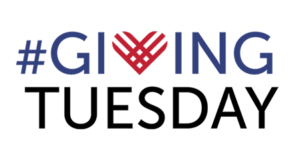Is Giving Tuesday Worth All the Trouble and the Hype?
5 Keys to a Successful Giving Tuesday Campaign

Image by Gerd Altmann from Pixabay
Is Giving Tuesday worth it? Does it really work? Or is it just another fad that, even though now several years strong, will eventually fade into the online dustbin of history next to Myspace, Aereo, and every social media ‘star’ ever?
In the experience we’ve had planning and writing multiple campaigns, it is more than worth it. ProActive Content has yet to be part of a Giving Tuesday campaign that does not produce a strong ROI that fully justifies the work that went into it.
And if that ever does happen, our clients can take comfort in our Giving Tuesday Guarantee that says we will refund any negative difference between how much gets donated and how much was spent creating the campaign.
But why do some nonprofits believe Giving Tuesday to be ineffective? Why do there seem to be a growing number of Giving Tuesday naysayers?
Reasons I’ve heard include:
- – The ROI doesn’t justify the time or money spent creating the campaign
- – Returns were pitiful
- – It interferes with the end of year fundraising
- – It’s just a fad and has no meaning – we’re better off creating our own special giving day
The last item on that list has some merit. If your nonprofit can succeed in rallying your donor base around a special giving day that has personal meaning to them and to your mission, by all means, do it!
But most of the reasons to ignore Giving Tuesday, in my opinion, arise from individual campaign flaws and inadequacies, not from the day itself.
To put it another way, you get out what you put in. If Giving Tuesday has consisted of a few hastily composed Facebook posts and some extra emails sent out starting a few days beforehand, then yes, you probably didn’t get the ROI, and Giving Tuesday wasn’t worth it.
On the other hand, you also don’t need to invest hundreds of hours planning your campaign and creating all sorts of customized graphics and expensive design material. You can actually create a dynamite Giving Tuesday campaign in relatively little time.
 As you can see, ProActive Content is a Giving Tuesday enthusiast.
As you can see, ProActive Content is a Giving Tuesday enthusiast.
One reason is that I love the concept. I love the idea of responding to the consumerism of the holiday season by giving instead of buying. The spirit of generosity powers Giving Tuesday and its brilliance arises from the universality of the idea. Any organization, any faith, any ethnicity, any country, any cause can get behind the philosophy of Giving Tuesday.
I also love it because the data supports its effectiveness. A Classy report found that Giving Tuesday attracted more new donors than end of year fundraising. It also produces more donors who later become P2P fundraisers. And it engages more young donors. Giving Tuesday is your best opportunity to connect with the younger demographic.
So is Giving Tuesday worth it? Does it work? Done right, the data says yes.
So then, what can your nonprofit do to ensure you get the ROI you want while your donors feel happy about making a difference? Here are five keys to a successful Giving Tuesday campaign.
5 Keys to a Successful Giving Tuesday Campaign
Giving Tuesday works because it taps into some specific fundraising principles. If you understand those principles and play to their strengths, you will win.
1. Focus Your Campaign on a Single Issue or Need

Image by Free-Photos from Pixabay
Giving Tuesday isn’t a time for another general campaign. “Give to our mission” and “Support our nonprofit” aren’t going to cut it on this unique day (those don’t work too well on other days either…).
But even using calls to action that might work for the end of the year can still lead to underperformance on Giving Tuesday.
This day is about specificity. Focus. Laser-sharp precision.
You need to find a single issue, a well-defined need, and build your entire campaign around it.
The need should be big enough to justify whatever amount you’re hoping to raise, but not so grand that it will take years to use the money. This is not the time for capital campaigns (unless you plan to pair up your Giving Tuesday and end of year campaigns – a perfectly viable strategy).
A one-day fundraiser is a time to meet quantifiable needs that are simple and easy to relate to.
A few examples:
- Help add four new beds to our youth shelter
- Send 10 students to summer camp
- Help 40 immigrants get legal help
- Protect 1500 acres of forestland
- Keep the animal shelter running for the rest of the year
Simplistic examples, but hopefully you’re seeing the point. You’re asking for help with a hyper-specific need. For a slice of one area of your overall mission.
2. Get Stories Related to That Issue or Need
Make the need come to life. You must do whatever it takes to put a story behind the need.
If it’s a human-centered need, even just one really powerful story can be enough. You can tell the story in multiple parts if it’s long, or from multiple perspectives, if it’s complex.
If you have more than one story connected to the same need, you’ll have more than enough content to fill out your campaign.
3. Communicate the Urgency

Image by Jan Helebrant from Pixabay
Whatever the need is, it must be met now. There needs to be a reason why this can’t wait until January, or next summer, or “whenever.”
The very best Giving Tuesday stories will be:
- – Immediate
- – Practical
- – Tangible
- – Visual
If your nonprofit isn’t facing any truly immediate needs, you can still find a slice of your program that often gets underfunded, or that hasn’t been given center stage in your marketing for a while.
But whatever it is, the donor should be able to picture it, even if you don’t have photos. They should be able to visualize the problem, and then visualize the celebration after the need has been met.
Tangible simply means this need can realistically be met with the requested amount of money. Again, Giving Tuesday isn’t the place to run a $500,000 campaign, even if you’re a large nonprofit. If you’re a small nonprofit, this isn’t the place for a $50,000 campaign.
Tangible means I understand the problem, and I believe I can do something about it. Tangible means it has a clearly defined end point.
Make it clear in your marketing what the need is, and why it needs to be met now. Give donors something to grab onto. Something they can say is “done” the day after Giving Tuesday.
4. Don’t Wait Until the Week Before Giving Tuesday
I’ve read Giving Tuesday strategy articles recommending approaches that begin less than one week before the day. No.
Your Giving Tuesday campaign should begin several weeks beforehand. ProActive Content prefers to use 4-week campaigns because then it sort of goes along with November’s timeline and allows for a slower build to the big day.
Some nonprofits will send a tidal wave of emails, like six or eight emails over just a two day period. If it works, then do it. But I have found that if you do a slower build, then you only need one or two emails on the actual Giving Tuesday.
Your donors have already been thinking about this for a few weeks, so all they need on the big day is a quick reminder. You don’t need to sell them on the entire campaign (and the very important immediate need they can meet) all in just a couple days.

Image by Keith Johnston from Pixabay
Again, some strategists believe you’re capitalizing the immediacy of short notice, so starting a campaign too early diffuses that impulse to just give. Here’s the need. Give today. That’s their approach. Again, if it works, then do it.
We prefer a slower build that gives people time to get excited about it. Anticipation is a powerful emotion. People want to find out how much money was given the very next day (and you should tell them). If they’ve been thinking about it for a month, as opposed to a few days, they will want to find out a whole lot more.
5. Restrict Your Campaign to Email and Social Media
Giving Tuesday has primarily been an online concept from the start. It’s easier and quicker to give online than using other means. The internet is more of an ‘impulse’ kind of place. That doesn’t mean you can’t expand your campaign to direct mail, phone, or even in person. But that’s not really what Giving Tuesday was designed for.
Your donors have a chance to meet a one-time practical and tangible need, right now. Direct mail is a slower medium. It doesn’t fit the urgency of the online approach. Not in this situation.
Plus, direct mail is more costly to produce. For a one-day campaign, you’ll probably have a harder time reaching your ROI. Plus, you won’t be able to deliver results the very next day.
Stick to email and social media, push hard, push for several weeks, and then you’re done.
Email is preferable to social media too because on social media you’re in competition with all the other nonprofits participating in Giving Tuesday.
Over email, you’re talking exclusively to your list. If they read your email, you have their full attention. An email will deliver your best return on investment. But social media is an important part of that because it reaches a wider audience, and it’s an easier place to send out quick reminders and keep the momentum building.
Afraid You’re too Late for Giving Tuesday This Year?
You’re not! (Well, if it’s the day before, then yes, you are….)
You can plan a Giving Tuesday campaign pretty quickly, especially if you combine what you just read with a fast-action planning guide.
Use This 4-step fast action Giving Tuesday planning guide.
If you use these resources and run a successful campaign, I’d love to hear about it. Leave a comment below! And if you try all this stuff and it still doesn’t work for you, I’d like to hear about that too and I’d be happy to troubleshoot your campaign for free and see if we can determine what went wrong.
If you need help producing your Giving Tuesday campaign, contact ProActive Content and request a free 1-hour planning consultation.
We can probably develop your campaign foundation within that time. Then, all you have to do is produce it.
Want more content? Get weekly nonprofit fundraising and copywriting tips, strategies, and motivations in the ProActive Insights newsletter.

